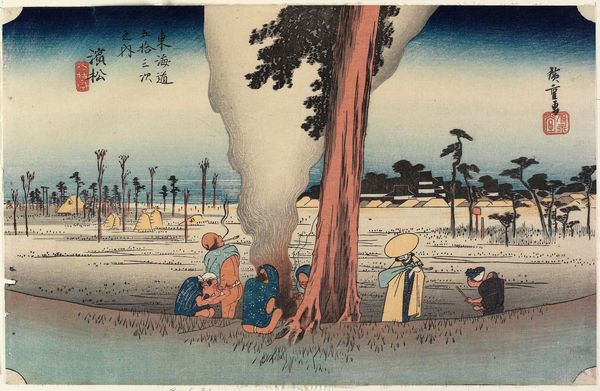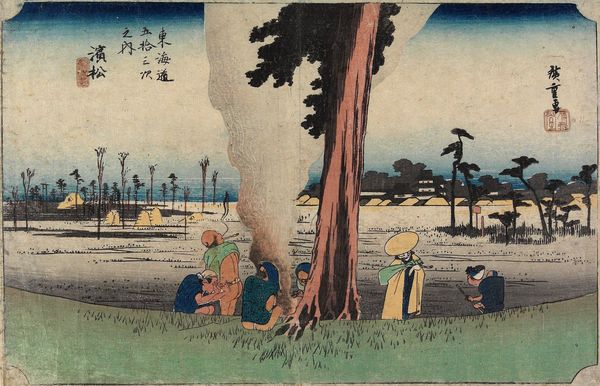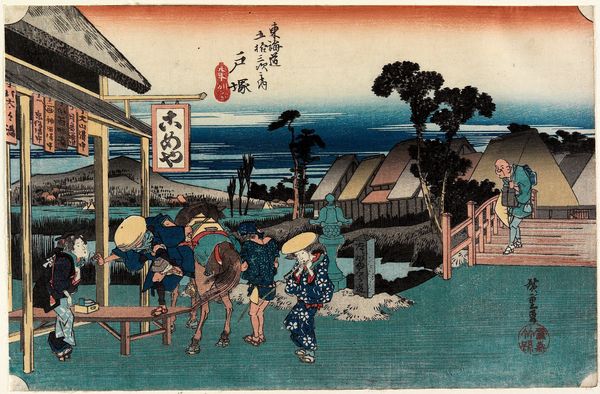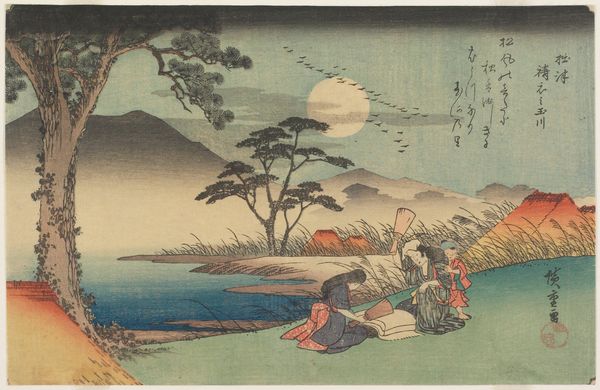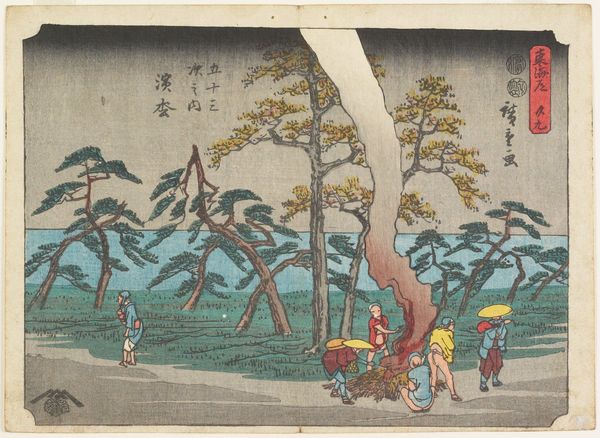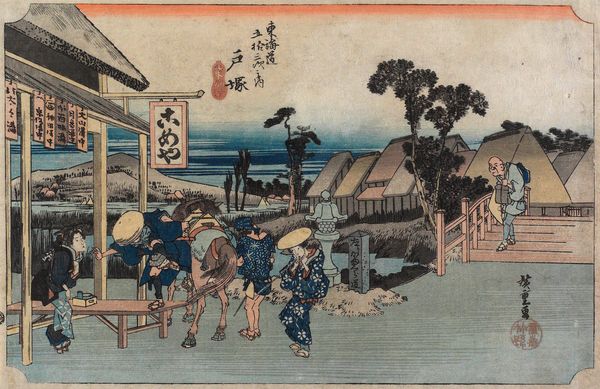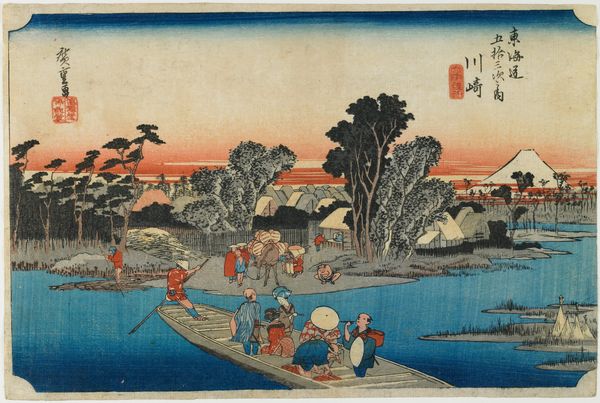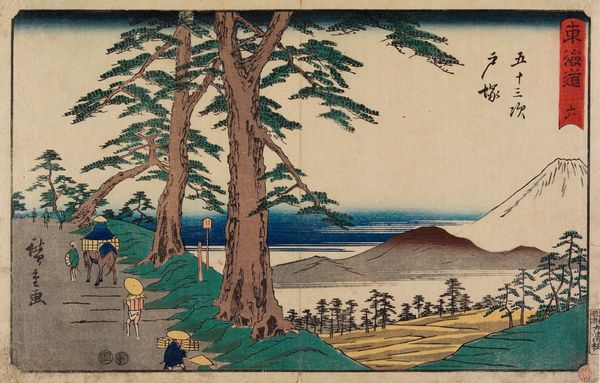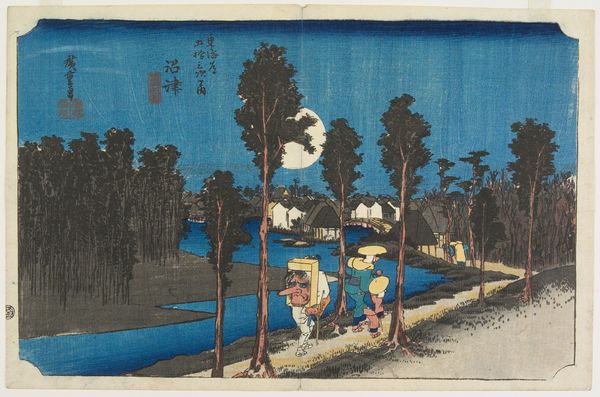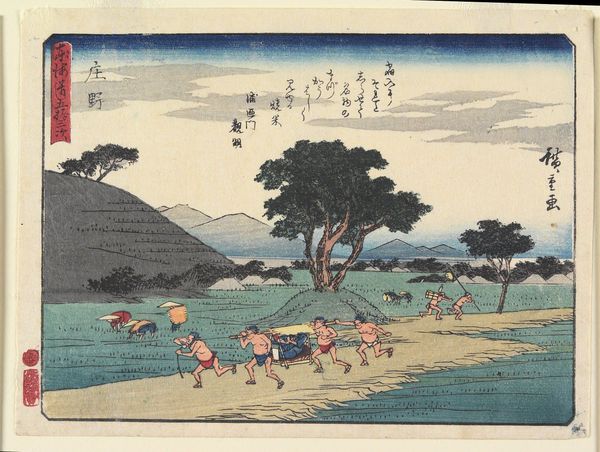
print, ink, woodblock-print
# print
#
asian-art
#
landscape
#
ukiyo-e
#
japan
#
ink
#
woodblock-print
#
orientalism
#
mixed media
Dimensions: 9 3/16 × 14 1/4 in. (23.4 × 36.2 cm) (sheet, horizontal ōban)
Copyright: Public Domain
Editor: We're looking at "Hamamatsu," a woodblock print by Utagawa Hiroshige, created around 1832-1833. The composition is dominated by a large tree. It seems so stark. What catches your eye about this particular print? Curator: Immediately, the structural organization commands attention. Consider how Hiroshige divides the pictorial space into distinct zones – the foreground figures, the middle ground expanse, and the suggestion of a distant shore beneath a subtly gradated sky. Observe the relationship between the density of the tree's trunk and the almost ethereal quality of the rising smoke, noting the formal contrast between vertical and diffuse elements. How do these spatial and material relationships speak to you? Editor: I notice that the figures huddle near the base of the tree. It is almost like the tree's color is repeated in their clothing. Are the figures are just compositional elements? Curator: It's tempting to see them as mere components. The application of line and color, coupled with their placement relative to the other formal components – that great trunk, the ambiguous space they occupy between water, path, and land. The lack of definitive narrative further compels us to examine the intrinsic relationships. Editor: That makes me consider the color palette - a muted range with a focus on blues, creams, and pinks. Are those colors symbolic, or is this an example of formalism downplaying the possibility of symbolism? Curator: The subdued tonality contributes significantly to the overall mood and unity of the image. Colors and their formal relationships contribute to the unity of design. Considering its compositional weight and unique approach, this piece truly emphasizes formal design over traditional symbolism. Editor: It's fascinating to analyze how formal elements interact within the artwork to produce something emotionally evocative and that eschews obvious narrative. I’m grateful for this focused viewpoint, as a young editor, it helps provide focus when analyzing the aesthetic in complex artworks. Curator: The pleasure lies in observing how these elements intersect and create the aesthetic.
Comments
No comments
Be the first to comment and join the conversation on the ultimate creative platform.
